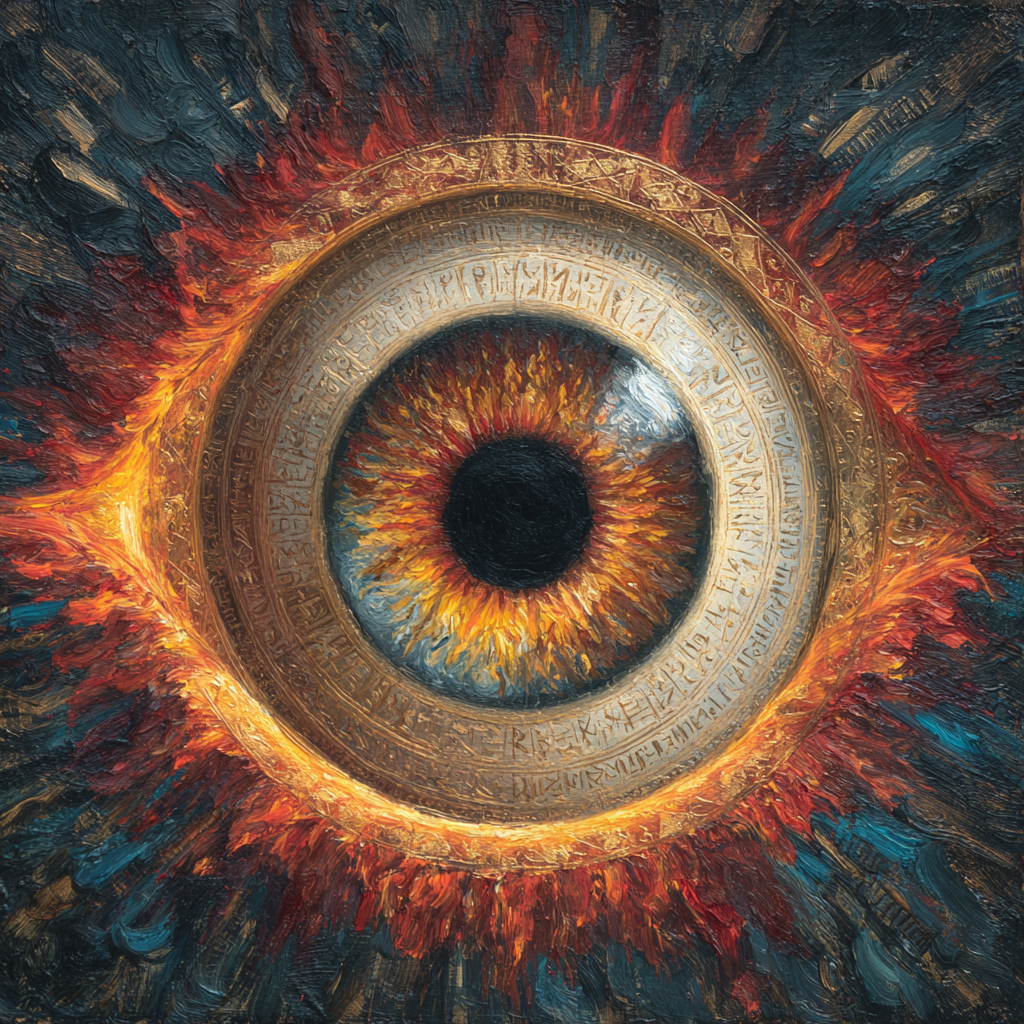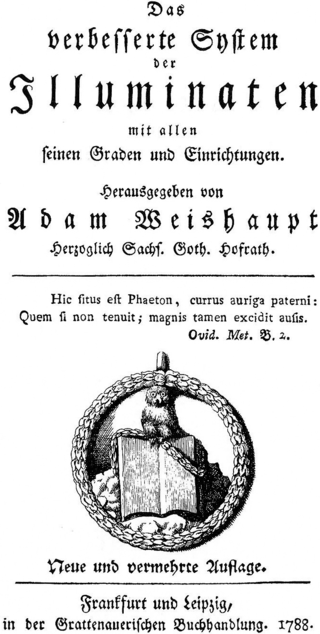The Bavarian Illuminati, “The Veiled Eye of Bavaria”
Unlock the dark secrets of The Bavarian Illuminati—where shadowy plots and forbidden knowledge threaten to rewrite the fate of your entire campaign!

- Name – Bavarian Illuminati
- Symbol / Emblem – A radiant single eye encircled by a ring of flames and arcane runes, often depicted in black and crimson on banners and seals
- Motto or Slogan – “Lux in Tenebris” (Light in Darkness)
- Type – Secret society
- General Alignment – Lawful Neutral (with undertones of Lawful Evil depending on interpretation); order through control and hidden knowledge
- Purpose / Function – To advance hidden knowledge and enlightenment through the subversion of corrupt religious and political powers, manipulating myth and lore to reshape society
- Founding Date / Origin – Secretly founded in the early 15th century, circa 1410, within the shadowed courts of Bavaria; said to descend from older occult fraternities and secret orders predating the Great Schism
- Founders – Adam Weishaupt, a learned professor of law and seeker of esoteric wisdom
- Beliefs & Core Values – Devotion to reason and enlightenment balanced with the secret study of forbidden arcana; rejection of blind faith and tyranny; the pursuit of mankind’s hidden potential through knowledge and power beyond the divine orthodoxy
- Public Reputation – Feared and mistrusted by nobility and clergy alike; whispered among commoners as sorcerers or shadowy manipulators; branded as heretics or conspirators
- Hidden Agenda (if any) – To overthrow established religious and royal authorities by undermining their influence through occult means and secret political machinations
- Leadership & Hierarchy – Governed by an elusive Inner Circle known only to initiates; ranks include Adepts, Illuminated Masters, and the Supreme Grandmaster, who remains hidden from most members
- Number of Members – Estimated between 150 and 200 across Europe, though only a few dozen know of the order’s full scope
- Key Figures – Adam Weishaupt; rumoured successors whose names are lost to history; alleged secret influencers within European courts
- Recruitment & Membership – Selective, favoring nobles, scholars, and those versed in mystical arts; candidates undergo rigorous scrutiny and tests of loyalty and intellect
- Initiation Rites or Requirements – Secretive ceremonies involving oaths bound by blood and shadow; trials designed to confront the initiate with their deepest fears and knowledge of forbidden truths
- Rules / Code of Conduct – Absolute secrecy; loyalty above all; obedience to the Inner Circle; preservation and concealment of knowledge; manipulation only through subtle influence, not overt force
- Headquarters / Base of Operations – Hidden enclaves within the Bavarian Alps; clandestine meeting places in European cities such as Ingolstadt and Munich
- Territory / Sphere of Influence – Bavaria as the core, with whispered influence extending to Vienna, Prague, and other imperial courts; networks in monasteries, guilds, and learned societies
- Allies – Certain academic circles, disaffected nobility, and secretive mystical orders sharing common interests in knowledge and power
- Rivals / Enemies – The Church, regional monarchies, rival secret societies, and inquisitorial authorities
- Known Operations or Projects – Suppression of heretical movements threatening their secrecy; acquisition of arcane relics; infiltration of political and religious institutions
- Funding / Resources – Wealth amassed through patronage from sympathetic nobles and merchants; secret hoards of rare books and artifacts
- Affiliated Organizations – Hermetic societies, alchemical guilds, and occult fraternities rumored to share or exchange knowledge
- Symbols in Use – Tattoos of the all-seeing eye or flame motifs on initiates; banners bearing black and red colors with the flame-encircled eye; subtle architectural motifs in meeting halls
- Attitude Toward Outsiders – Distrustful and secretive; only those deemed useful or trustworthy are tolerated; many are misled with false fronts or myths to conceal true aims
- Customs & Rituals – Regular secret meetings timed to celestial events; ceremonies invoking forgotten deities or spirits; cryptic readings and chanting from forbidden texts
- Language / Ciphers Used – Latin, archaic German dialects, and coded runes inscribed in manuscripts and correspondence to maintain secrecy
- Notable History / Key Events – The mysterious disappearance of Duke Albrecht of Bavaria in 1447, an event attributed to the Bavarian Illuminati’s dark influence; the secret trials of the Black Sun in 1429, when the order reportedly sealed a pact with a forgotten spirit of the forest

In the shadowed twilight, there exists whispered mention of a cabal known by few and feared by many—the Bavarian Illuminati. Their standard, a seal bearing a single radiant eye encompassed by a circle of flame and inscrutable runes, is said to be concealed beneath banners of midnight black and blood red.
Though they profess a public visage of enlightenment and the pursuit of knowledge, their true purpose is veiled: the subversion of established order through the mastery of arcane and forbidden lore. Their creed, whispered among learned few, rejects the divine authority as wielded by church and crown alike, seeking instead the illumination of mankind’s secret potential—whether by pact, ritual, or hidden wisdom drawn from realms beyond mortal ken.
Among the nobility and clergy, the Bavarian Illuminati inspire dread and suspicion, branded as heretics or sorcerers who traffic in the shadows of legend. The common folk, meanwhile, speak of them only in fearful murmurs, linking them to tales of vanished heirs, spectral guardians, and blighted lands where the veil between worlds thins.
In truth, the Bavarian Illuminati delve deeply into the ancient myths and folklore of old—scrutinizing sacred relics, lost texts, and enchanted places. Yet their engagement is twofold: some seek to suppress these powers lest they fall to rivals or profane hands, while others exploit the myths as instruments of control and secret influence. Their influence is said to stretch from the secluded Alpine enclaves of Bavaria to the great courts of Vienna and Prague, threading through guilds, monasteries, and clandestine gatherings under the veil of night.
Their initiation is no mere ritual but a harrowing passage, where aspirants—often men of noble birth, scholars versed in the hermetic arts, or knights disillusioned with worldly power—are tested for intellect, resolve, and willingness to forsake earthly ties. Those who pass bear marks invisible to the untrained eye, and are bound by oaths sealed with blood and shadow.
Among their most jealously guarded secrets are relics rumored to grant sight beyond the mortal coil, grimoires penned in tongues lost to time, and pacts whispered to ancient, otherworldly powers. Their hierarchy remains as enigmatic as the night itself, led by an Inner Circle whose names are lost even to many within their fold, said to convene only beneath the silent watch of the new moon.
One storied incident persists in both fear and legend: the mysterious disappearance of Duke Albrecht of Bavaria during the winter solstice of the year of our Lord 1447. It is said the duke sought the Bavarian Illuminati’s favor, only to vanish from his chambers without trace, leaving behind cryptic symbols and a lingering aura of dread. Whether curse or divine retribution, the tale endures as a grim testament to the peril entwined with the Bavarian Illuminati’s dark illumination.
Hierarchy of the Bavarian Illuminati
Structure Overview: The Bavarian Illuminati is arranged in concentric layers, symbolizing ascension from mundane ignorance toward esoteric truth. Each rank is both symbolic and functional, reflecting the order’s blend of arcane study, manipulation of worldly affairs, and sacred secrecy.
Low Rank: Initiate Tier (The Veil of Flame)
“To step into the Veil is to see the world anew—and to be forever hunted by the truth.”
Title: Torchbearer
- Role: New recruits undergoing spiritual and ideological conditioning
- Responsibilities:
- Study foundational texts (often encoded in metaphor or cipher)
- Complete assigned tests in observation, secrecy, and loyalty
- Serve higher-ranking members without question
- Gather information, eavesdrop, or infiltrate public or religious gatherings
- Mystical Trait: Forbidden truths are introduced gradually, often through dreams or hallucinogenic rites
- Approximate Numbers: 80–100 across multiple cells
- Gameplay Use: PCs may begin here if playing as agents-in-training; or encounter Torchbearers as unknowingly dangerous spies
Title: Lantern Acolyte
- Role: Trusted novice given access to limited rituals and relics
- Responsibilities:
- Copy and protect sacred texts
- Perform minor rituals, cleanse ritual chambers
- Manage communication between cells
- Initiate lesser recruitment efforts
- Mystical Trait: Each Acolyte is bound to silence by an oath inscribed magically on their tongue, rendering them unable to speak of the order outside ritual context
- Approximate Numbers: 40–60
- Gameplay Use: Useful for plot hooks, emissaries, or unreliable informants—may waver between fear and loyalty
Mid Rank: Adept Tier (The Circle of Knowing)
“Knowledge without obedience is rebellion. Obedience without knowledge is blindness. Balance is the path.”
Title: Illuminated Adept
- Role: Fully initiated member with access to advanced teachings and field responsibilities
- Responsibilities:
- Conduct secret operations (assassinations, relic recovery, political influence)
- Train and test new recruits
- Lead small cells of Torchbearers and Lantern Acolytes
- Interpret omens and celestial alignments for guidance
- Mystical Trait: Granted use of the Eye of Veiling, a rune-inscribed lens that reveals hidden glyphs, illusions, or arcane traps
- Approximate Numbers: 20–30
- Gameplay Use: Excellent as mid-tier villains, allies, or mentors; strong in both intrigue and magic
Title: Magister Obscura
- Role: Regional operatives overseeing operations in key cities or courts
- Responsibilities:
- Coordinate multiple cells
- Manipulate political figures via blackmail, enchantment, or bribery
- Guard or study artifacts too dangerous for lower ranks
- Quell threats to secrecy (including rogue members)
- Mystical Trait: Each is bonded to a Shadow Archive, an arcane tome only they can open, storing memories, intelligence, and lost knowledge
- Approximate Numbers: 5–10
- Gameplay Use: Ideal for central plot antagonists, enigmatic quest-givers, or recurring nemeses
High Rank: Inner Circle (The Pentacle of Flame)
“One mind in five faces, one truth in many tongues.”
Title: Warden of the Fifth Flame (One of Five Seats of Power)
- Role: One of the ruling council members, each embodying a Pillar of the Illuminati: Knowledge, Influence, Sorcery, Protection, and Recruitment
- Responsibilities:
- Shape doctrine, direct major operations
- Choose and initiate successors
- Perform high rituals that affect fate, weather, or dreams across entire regions
- Serve as judges in trials of betrayal or failure
- Mystical Trait: Each Warden is psychically linked to an artifact called the Eye Below the Mountain, granting visions of past, present, and future—but at the cost of sanity
- Approximate Numbers: Exactly 5
- Gameplay Use: Campaign-defining figures; rarely encountered directly. Ideal as secret patrons, manipulative masterminds, or ultimate adversaries
Title: The Hidden Flame (Supreme Grandmaster, Unknown Even to Many Within)
- Role: The veiled architect of the order’s long-term vision; rumored to be immortal, disembodied, or divine
- Responsibilities:
- Rarely intervenes directly, but alters the course of history through whispers and prophecy
- May possess agents through dreams, relics, or possession
- Enforces cosmic balance between knowledge and chaos
- Mystical Trait: Never seen, but signs of their presence include sudden eclipses, ghostly whispers, or symbols appearing in flame
- Approximate Numbers: One—if they exist
- Gameplay Use: A perfect mystery figure—real or myth? Villain or god? You decide.
Notes for TTRPG Integration
- Faction Perks: Members gain access to rare scrolls, coded messages, rituals, and insight into the supernatural. Higher ranks may gain special magical boons, forbidden lore, or cursed relics.
- Faction Quests: Players might be tasked with proving loyalty, stealing sacred texts, decoding visions, or eliminating traitors.
- Opposition Hooks: Rival orders like the Inquisition, Church of the Radiant Dawn, or Templar remnants may offer rich narrative conflict.

 Buy me a coffee
Buy me a coffee